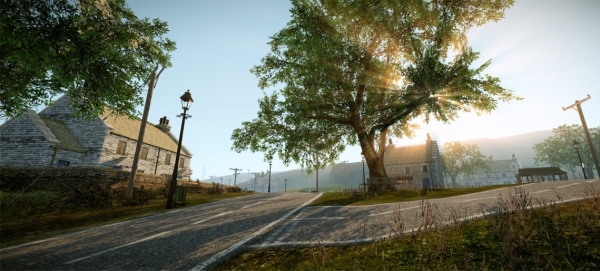Dear Esther turned heads when it hit Steam earlier this year. Hardly a game at all, in the traditional sense of the word, Dear Esther had players leisurely strolling around a mist-veiled island, listening to a narrator as they walked. After the success of Dear Esther, developer thechineseroom are coming back with another title just as experimental as its spiritual parent: Everybody’s Gone to the Rapture.
Everybody’s Gone to the Rapture takes place in rural Shropshire, England. Hardly your usual videogame destination, but then again this hardly seems to be your typical video game. Speaking to BeefJack, Creative Director Dan Pinchbeck outlined a little of what we can expect from Everybody’s Gone to the Rapture.
“The concept of it is this almost ’60s-’70s Brit science fiction,” he explained. “This John Wyndham, John Christopher kind of thing – of how the end of the world would be responded to in a rural English location.”
In the game you’ll have just one hour to play, but you wont be able to experience all that Rapture has to offer in just 60 minutes. “If you wanted to go diagonally from one corner to the other, it’d probably take you around 20 minutes,” said Pinchbeck.
While Dear Esther lacked any kind of interaction beyond moving to certain points on the island to trigger the narrator’s next piece, Everybody’s Gone to the Rapture will include interactive elements more traditional to games.
Comparing Rapture to Dear Esther, Pinchbeck says “we’re looking at making it much more physically interactive, so you can manipulate objects, you can open and close doors.
“Without it being too much like easter egg rewards, the game will reward you for exploring and interacting. So there are places which are not obvious to get to, and you have to do things in order to get to them.”
While Dear Esther marooned players on an uninhabited island, Rapture will introduce characters to interact with. Your interactions with those characters, and the environment around you, will have an impact on the world. The hour time limit will mean players will only ever see a fraction of the game, thereby encouraging players to revisit the game.
Right now there are six characters, but just how you interact with them is still being decided.
“They’re almost kind of memory traces of people that were there, and how we represent them, and whether we do full-on character builds or whether we do something more symbolic, we’re still kind of chewing around with,” explains Pinchbeck.
Dear Esther experimented with how creators can use interactivity to tell a story, and these details make it sound like Everybody’s Gone to the Rapture could push that experiment even further. If you’re interested in the topic, take a look at GamerNode’s own interview with Dan Pinchbeck, in which he talks at greater length on the subject of interactivity, narrative, and Dear Esther‘s place in the videogame industry.
Everybody’s Gone to the Rapture is slated to release on PC via Steam in Summer 2013.


















